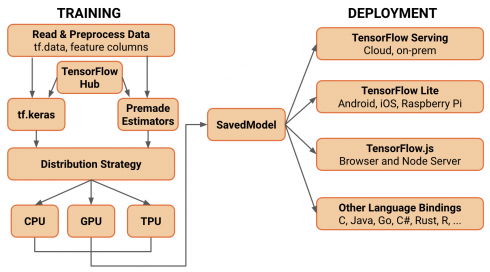
Leading up to the release of TensorFlow 2.0, the team behind the library has revealed some of its plans for the upcoming version of the machine learning framework.
According to the TensorFlow team, TensorFlow 2.0 will focus on simplicity and ease of use.
“We’re very excited about TensorFlow 2.0 and the changes to come. TensorFlow has grown from a software library for deep learning to an entire ecosystem for all types of ML. TensorFlow 2.0 will be simple and easy to use for all users on all platforms,” the team wrote in a post.
TensorFlow 2.0 will package together the various components released in the past few years. The resulting platform will be able to support machine learning workflows from training through deployment.
Other highlights of the upcoming release include easy model building, robust model deployment on any platform, powerful experimentation for research, and a simplified API.
Key changes from TensorFlow 1.0 include replacing queue runners with tf.data, removing graph collections, changing how variables are treated, moving and renaming API symbols, and removing tf.contrib from the core repository and build process.
“TensorFlow’s contrib module has grown beyond what can be maintained and supported in a single repository. Larger projects are better maintained separately, while smaller extensions will graduate to the core TensorFlow code. A special interest group (SIG) has been formed to maintain and further develop some of the more important contrib projects going forward,” the team wrote.
TensorFlow will also offer a conversion tool to update TensorFlow 1.x Python code to TensorFlow 2.0 compatible APIs. The tool will also flag cases in which code is unable to be converted automatically.
According to the team, TensorFlow 2.0 will be available in public preview early in 2019. Developers can develop in the “TensorFlow 2.0 way” by using tf.keras and eager execution, pre-packaged models, and deployment libraries. In addition, the Distribution Strategy API is already partly available.






